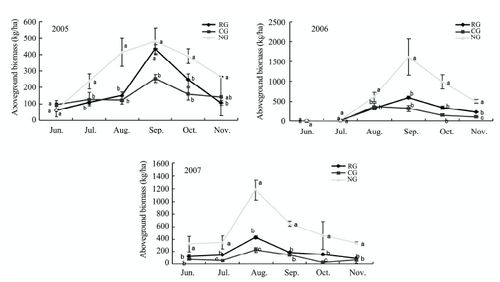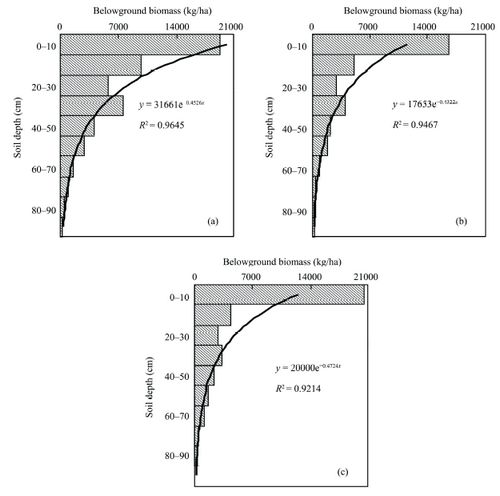Influences of various grazing systems on community biomass of a desert grassland in Inner Mongolia, China
Updatetime:2012-12-25From:
【Enlarge】【Reduce】
This study investigated the effects of various grazing systems, including continuous grazing, rotational grazing, and no-grazing systems, on the community biomass in the Stipa breviflora Griseb desert grassland during the grazing seasons in 2005, 2006,and 2007, based on study sites established in 1999. The researchers found that the seasonal dynamics of the aboveground biomass were quite similar among the three treatments, which reached peak values in period from August to September during each study year. The continuous grazing system reduced the aboveground biomass from 2005 to 2007 under drought conditions, and the rotational grazing and no-grazing systems maintained more aboveground biomass than the continuous grazing system did. The belowground biomass declined with the increase of soil depth among the three treatments, and in the surface 20-cm soil layer it accounted for more than 60% of the total biomass. The belowground biomass was found to be highly correlated with soil depth under rotational grazing. The total belowground biomass within the 0–100-cm soil layer for rotational grazing was significantly higher than for continuous grazing and no-grazing, and had 15,775 kg/ha more biomass. Our results demonstrate that conservative rotational grazing can alleviate grassland deterioration by reserving more aboveground and belowground biomass than the continuous grazing system does.

Seasonal and annual dynamics of aboveground biomass (kg/ha) under three grazing systems in 2005, 2006, and 2007.
Means with different letters at the same time point differ significantly (P<0.05).
Means with different letters at the same time point differ significantly (P<0.05).

The vertical distribution of belowground biomass under three grazing systems RG (a), NG (b), and CG (c), and the regression
equation of the belowground biomass (y; kg/ha) with the soil depth (x; cm).
equation of the belowground biomass (y; kg/ha) with the soil depth (x; cm).
Appendix





